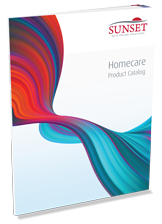Here at Sunset we pride ourselves on bringing quality CPAP and respiratory products to market. We follow rigid quality standards to ensure each of our products will meet the needs of our customers. The following article explains how we select the products that we add to our line and gives details on one of our most important quality assurance processes, the First Article Inspection.
When Sunset is looking to bring on a new product from a new or existing supplier, they must first be approved by Quality. The approval process for a new supplier consists of three main steps:
- An on-site audit and/or a completed supplier survey. Any vendor or supplier that we purchase supplies or components from must be qualified. They should have their own quality systems in place and be able to show us evidence of the testing and inspections they have done within their own facility before they send products to us for testing.
- Once we have determined they meet our standards, we review and approve their FDA registration information, making sure the FDA has qualified them as well.
- Finally, we request product samples and pass them through several departments including Business Development, Quality and Marketing to make sure they meet everyone’s standards. Each department has their own set of tests and questions for the supplier at that time.
Once the supplier approval process is complete, and we are ready to place an order, the Purchasing department will alert the Quality team to inspect the product once it arrives. At this time we perform what is called a First Article Inspection. First Articles are intended to confirm the physical configuration of a device and its components to ensure the specifications meet those agreed upon by Sunset and the supplier.
During each First Article Inspection, we compare the product we receive to the Device Master Record (DMR) to ensure they match our quality standards. The DMR consists of detailed drawings, dimensions, material specifications and any other details about the product and packaging that we have determined and passed along to the supplier prior to bringing on the product. We thoroughly compare every component to ensure the product has met our predetermined specifications. In some instances, we also perform additional tests to verify product performance.
The details of the inspection are recorded on a First Article Inspection Form. If anything needs to change, we send the product back to the supplier and repeat the process over again. Once everything looks ok, we fill out another form called an Engineering Change Order which we use to formally release the product into inventory.
By performing First Articles we are ensuring our products are held to the standards we have in place and those that are set by regulated bodies. These product inspections are one of the many ways we ensure we are continuously bringing the highest quality CPAP and respiratory products to market. First Article Inspections ultimately provide peace of mind for both Sunset and our valued customers.



